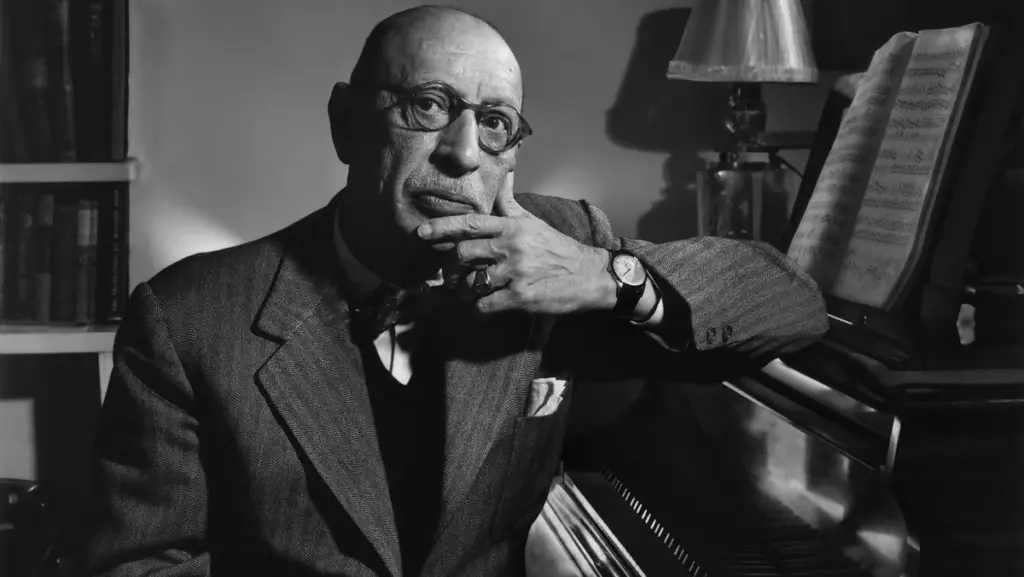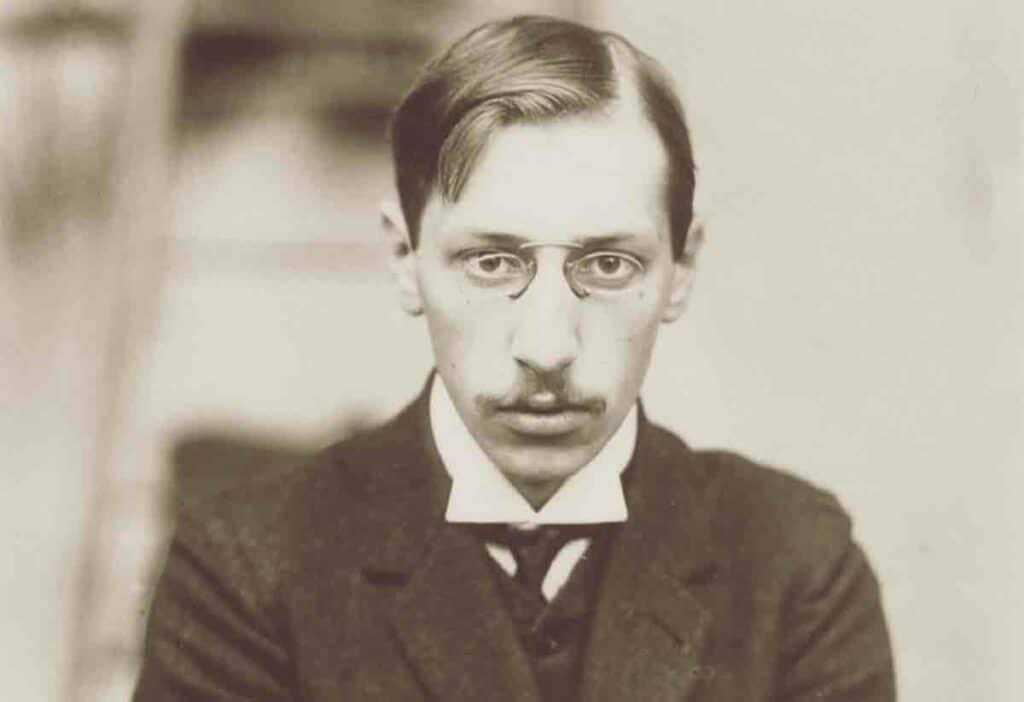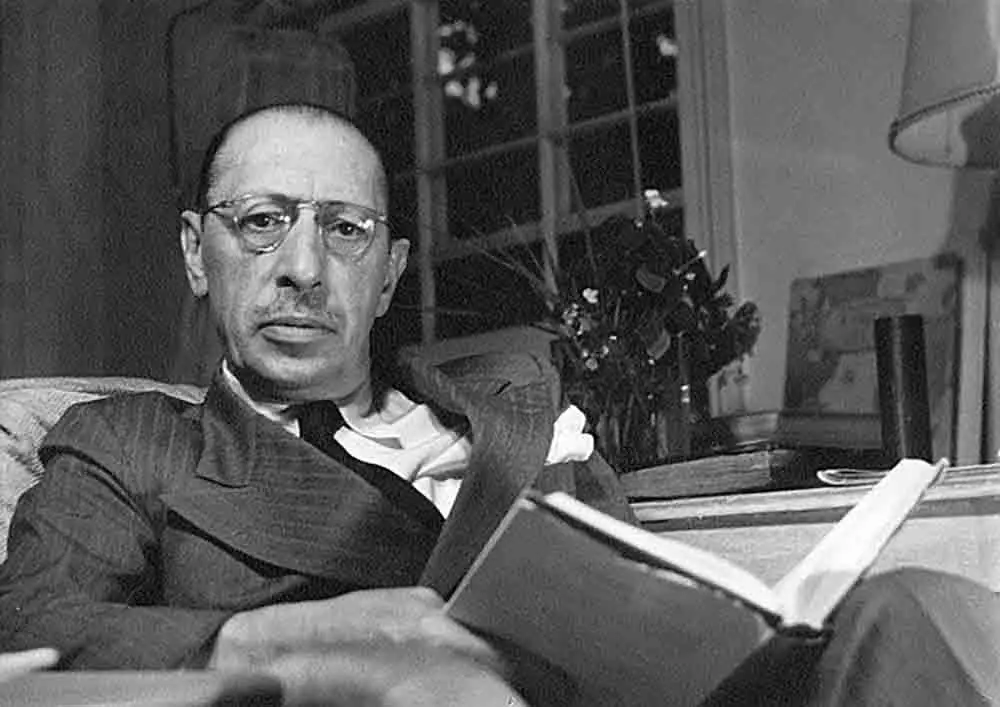Igor Stravinsky is a renowned composer and conductor. He entered the list of significant figures of world art. In addition, it is one of the most prominent representatives of modernism.
Modernism is a cultural phenomenon that can be characterized by the emergence of new trends. The concept of modernism is the destruction of established ideas, as well as traditional ideas.
Childhood and youth
The famous composer was born in 1882 near St. Petersburg. Igor's parents were associated with creativity. Stravinsky's mother worked as a pianist - the woman accompanied her husband, who worked as a soloist at the Mariinsky Theatre.

Igor spent his childhood in a traditionally cultured and intelligent family. He had a great opportunity to visit the theater and watch the wonderful game of his parents. Famous musicians, composers, writers and philosophers were the guests of the Stravinsky House.
From an early age, Igor began to be interested in music. At the age of 9, he sat down at the piano for the first time. After graduating from high school, the parents insisted that their son receive a law degree. Stravinsky moved to live in the cultural capital of Russia - St. Petersburg. He continued to make music. In addition, he took private music lessons from Rimsky-Korsakov.
Rimsky-Korsakov immediately realized that in front of him was a real nugget. The composer advised the young man not to enter the conservatory, since the knowledge that the musician possessed was enough to loudly declare himself.
Korsakov taught the ward the basic knowledge of orchestration. He also helped the novice composer to improve the written compositions.
Creative way of maestro Igor Stravinsky
In 1908, several of Igor's compositions were performed by the court orchestra. We are talking about the works "Faun and Shepherdess" and "Symphony in E flat major". Soon Sergei Diaghilev got to perform the maestro's orchestral scherzo.
When he heard the beautiful music of a talented Russian composer, he wanted to get to know him personally. Later he commissioned several arrangements for the Russian ballet in the French capital. Such a move hinted to the public that Stravinsky's talent was recognized internationally.
Soon the premiere of new compositions by Stravinsky took place, after which he was called a bright representative of modernism. Among the creations was the musical accompaniment for the ballet The Firebird.
On the wave of popularity, the maestro thought about creating a symphonic ritual, which caused a lot of positive emotions in the Parisian theater. The new creation of the composer was called "The Rite of Spring". The audience was divided into two camps. Some admired Igor's bold idea. And others, on the contrary, heard in the musical composition notes of vulgarity that went beyond the bounds of what was permitted.
It was from that moment that Igor began to be called the author of that very “Rite of Spring”, as well as a destructive modernist. After that, he left spacious Russia. And together with his family, he went to the territory of France.

War and music
The outbreak of the First World War led to the cessation of the so-called "Russian Seasons" in the capital of France. Stravinsky was left without profit and means of subsistence. A large family went to the territory of Switzerland. Then Igor had no money. During this period of time he worked on Russian folk tales.
By this time, Igor wrote more meaningful and ascetic music, the main advantage of which was rhythm. In 1914, the maestro began work on the ballet Les Noces. Only 9 years later, Stravinsky was able to present the work. The musical accompaniment to the ballet was based on rural Russian compositions that were performed at weddings and weddings.
After the presentation of the ballet, he decided to remove nationalism from his compositions. He recorded subsequent creations in the neoclassical style. The maestro "tuned" ancient European music in his own way. From 1924 he stopped composing music. Igor took up conducting. After the end of World War II, his compositions in his homeland gained immense popularity.
In the same period of time, the so-called "Russian Seasons" were resumed in France. They weren't on the same level. In 1928, Diaghilev and Stravinsky presented the ballet Apollo Musagete. A year later, Diaghilev died. After his death, the troupe broke up.
1926 was a landmark year for the composer. He experienced a spiritual transformation. This event influenced the work of the maestro. Religious motifs were clearly audible in his compositions. The composition "Oedipus Rex" and the cantata "Symphony of Psalms" demonstrated the spiritual development of the maestro. The librettos in Latin were created for the presented works.
The creative crisis of the composer Igor Stravinsky
Meanwhile, the avant-garde was popular in European countries. And if for some composers this event was joyful. That for Stravinsky, as a representative of neoclassicism, it was a creative crisis.
His emotional state was on edge. The maestro is out. This period of time is marked by the release of several compositions: "Cantata", "In Memory of Dylan Thomas".
Soon the composer suffered a stroke. Despite the deterioration of health, Igor was not going to leave the stage. He worked and composed new works. The last composition of the maestro was "Requiem". At the time of writing the composition, Stravinsky was 84 years old. The composition demonstrated the incredible vital energy and enthusiasm of the creator.

Details of privacy
The composer was lucky to find his love in 1906. Ekaterina Nosenko became the maestro's official wife. The wife bore Igor four children. Almost all of Stravinsky's children followed in the footsteps of their popular father. They connected their lives with creativity.
Nosenko suffers from consumption. The climate that was in St. Petersburg did not suit the woman, and her condition worsened. From time to time she and her family lived in Switzerland.
In 1914, the Stravinsky family failed to leave Switzerland and return to their homeland. The First World War has come. After the war, there was a revolution in the world. Provocative slogans sounded everywhere. In St. Petersburg, the Stravinskys left a significant amount of money and property. All their wealth was taken from them. The Stravinskys were left without a livelihood and a roof over their heads.
For the maestro, this was a tragedy, since he supported not only his wife and children. But also his own mother, as well as nephews. There was "chaos" on the territory of the native country. Igor was no longer paid money for the performance of author's compositions, since he emigrated. He had no choice but to release new editions of his works.
Once the composer was credited with an affair with Coco Chanel, who helped him financially when he was in financial difficulties. For several years in a row, Stravinsky and his wife lived at Koko's villa. The woman supported not only him, but also a large family. Thus, she wanted to express respect for the famous composer.
When Igor corrected his financial situation, Koko sent him money for more than 10 years. This became the basis for assuming that there were not only friendly relations between the composer and the designer.
In 1939 Stravinsky's wife died. The composer did not grieve for long. When he moved to the United States of America, he liked Vera Studeykina. She became his second official wife. They lived together for 50 years. They were talked about as the perfect couple. The family appeared everywhere together. Igor, when he saw Vera, simply blossomed.
Interesting facts about the composer Igor Stravinsky
- He drew well, and was also a connoisseur of painting. He had a rich library, which was devoted to the fine arts.
- Igor was terribly afraid of catching a cold. He dressed well and always wore warm clothes. Stravinsky took care of his health, and from time to time he did preventive examinations with doctors.
- Stravinsky adored hard liquor. He joked that he should have taken the pseudonym "Straviskey". Alcohol in the life of the maestro was in moderation.
- He didn't like people who talk loudly. They frightened and alarmed the maestro.
- Stravinsky did not like criticism, but he could often express negative opinions about his colleagues.
Igor Stravinsky: The Last Years of His Life
He passed away on April 6, 1971. The cause of death was heart failure. The second wife buried Stravinsky in Venice, in the Russian part of the San Michele cemetery. His wife survived Igor by more than 10 years. After Vera's death, she was buried near her husband.



